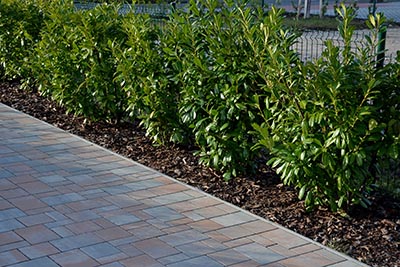
With houses being built more closely together, it’s often hard to find privacy. But homeowners can plant shrubs that will quickly grow into a barrier screen to block out neighbors or a busy road, according to a news release from the Virginia Farm Bureau.
Plant screens provide curb appeal and environmental benefits like noise reduction, erosion control and habitat for wildlife and pollinators.
“Most people, when they want some type of screening, they want something that is evergreen,” said Laurie Fox, a horticulture specialist at Virginia Tech’s Hampton Roads Agricultural Research and Extension Center in Virginia Beach. “If you’ve got something like a large holly or one of the skip laurels, then you need 10 to 12 feet or more in width. If you’ve only got 3 feet, you may need go with something that’s very narrow and doesn’t overgrow the space – like a vine on a trellis. You don’t want to be out there having to prune it back multiple times a year.”
While evergreens are popular, homeowners also should consider cultivating a mixture of plants, said Mark Viette, an Augusta County horticulturalist and host of “In the Garden” on Virginia Farm Bureau’s Real Virginia television show.
“By using different plants for your screen, you’ll have different sizes and colors to look at, providing something attractive instead of what you’re trying to block,” said Viette.
As with any landscaping endeavors, Viette said homeowners should consider how much room is available, the plant’s growth needs – both vertically and horizontally, and mature size, and the site conditions, including moisture, drainage and light.
- Evergreens, like the versatile American holly and the fast-growing green giant arborvitae, provide year-round screening while being low-maintenance, hardy and suitable for many landscapes
- Hollies can be pruned into hedges or allowed to grow up to 40 feet tall
- Green giant arborvitaes’ feathery branches add unique texture to a landscape
- Little Gem magnolias add drama with large glossy leaves and white flowers and grow well in full sun and well-draining soil
- The Japanese Pittosporum shrub also is known for its fragrant flowers and dense branches that provide shelter for nesting birds
- The bayberry is a native semi-evergreen shrub with waxy, silver-grey berries that add interest
- Create a mixed plant screen by incorporating deciduous trees like dogwoods, redbuds and oakleaf hydrangeas as well as other plants creates a more natural, layered canopy look
A mixed screen also “increases wildlife biodiversity and can give your planting better resiliency when faced with environmental factors such as drought, excessive rains and cold,” said Ed Olsen, a Virginia Cooperative Extension horticulture agent in Henrico County.
It’s also important to think about maintenance. Planting trees and shrubs can cut down on lawn care, but some require pruning and tidying if they drop leaves, cones, fruits or berries. A more formal hedge will require frequent shearing compared to a natural or informal planting.










